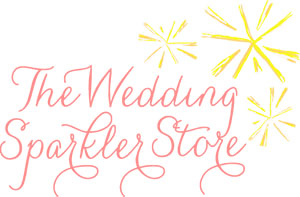News
How to's for light painting and sparkler photography July 10 2014
There is no doubt that sparkler photography is absolutely breathtaking and can really make your wedding photos magical. If you are featuring wedding sparklers in your wedding decor or as a part of your send off, it is almost a necessity to have it a part of your wedding photography. If you have never done light paining photography or your wedding photographer has never done it, it may take some extra time to get it right.
In a search to figure out just how light painting photography works, we were able to find some great how to's.
-
Introduction to Light Painting in Photography by Kara Wahlgren, Kiwi Photography
 This tutorial by Wahlgren is straight forward and kept simple (though the shots are spectacular!). It is easy enough to understand if you are an amateur photographer that brushes up on how a camera functions outside of the point and click, and a breeze if you are an experienced photographer. She has several examples and explains what she did, why, and how it works. So, if you are wanting sparkler photography and it is the first time your photographer is doing it, this would be a great article for them to read - and just expect it to take a few trys!
This tutorial by Wahlgren is straight forward and kept simple (though the shots are spectacular!). It is easy enough to understand if you are an amateur photographer that brushes up on how a camera functions outside of the point and click, and a breeze if you are an experienced photographer. She has several examples and explains what she did, why, and how it works. So, if you are wanting sparkler photography and it is the first time your photographer is doing it, this would be a great article for them to read - and just expect it to take a few trys! -
Commitment To Sparkle Motion: Sparkler Portraits and Light Painting by Lomo-Camkage, Lomography
 (The photo above from Lomography would be so great used for wedding shoot!) This how to is not quite as straight forward, but it is very detailed and has a ton of examples. It is not focused on wedding photography per se, but has a lot of great ideas that can inspire some beautiful photos. Also, it has some great info and tips on what kind of sparklers to use and how it really works behind the scenes.
(The photo above from Lomography would be so great used for wedding shoot!) This how to is not quite as straight forward, but it is very detailed and has a ton of examples. It is not focused on wedding photography per se, but has a lot of great ideas that can inspire some beautiful photos. Also, it has some great info and tips on what kind of sparklers to use and how it really works behind the scenes. - Sparkler Fun - Tips & Tricks by Corine, StudioTran Photographers
 This article is less of a step by step, but still has some great info. It is very detailed and can fill int he gaps where the other blogs might be vague.
This article is less of a step by step, but still has some great info. It is very detailed and can fill int he gaps where the other blogs might be vague.
The absolute basic to know how this works is that it involves having a long/slow shutter speed so that the light can be captured and having a 'painter' to run your light around.
